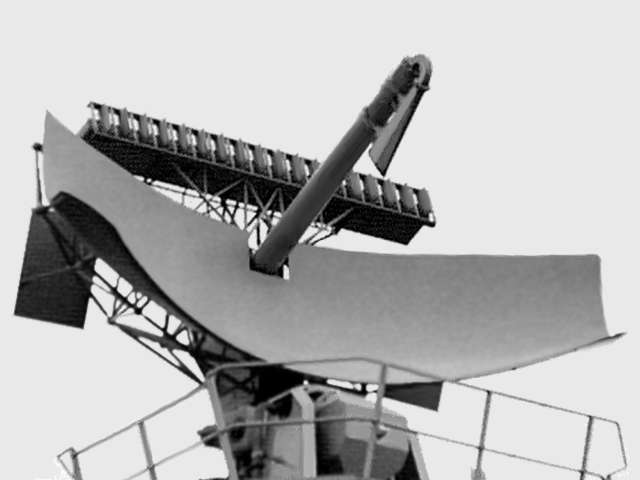RAN 10S
Description of the radar set, tactical-technical characteristics

Figure 1: RAN-10S antenna on the Italian Navy frigate Fenice in 1989
| Specifications | |
|---|---|
| frequency: | F-Band |
| pulse repetition time (PRT): | |
| pulse repetition frequency (PRF): | |
| pulsewidth (τ): | |
| receive time: | |
| dead time: | |
| peak power: | |
| average power: | |
| instrumented range: | 60 NM (≙ 110 km) |
| range resolution: | |
| accuracy: | 20 m, 0.35° |
| beamwidth: | |
| hits per scan: | |
| antenna rotation: | 15 and 30 min-1 |
| MTBCF: | |
| MTTR: | |
RAN 10S
The RAN 10S alias MM/SPS-774 was an operating in F-Band high-power combined maritime Air/Surface surveillance radar (so-called: ASu-Radar). It is suitable for installation on medium tonnage ships, such as destroyers, frigates and corvettes. The design philosophy is the same as that of the RAN-3L and a number of items are common to both systems.
The main features are high elevation coverage, elevated data rate and high precision/resolution. The use of a coded waveform in conjunction with digital processing of the received signal gives excellent capabilities of clutter and jamming rejection, enabling it to operate in full frequency agility while maintaining anti-clutter capabilities. The antenna is a wide parabolic reflector fed by a horn, and is providing a Cosecant-squared pattern by deviating from the ideal parabolic shape of the reflector curvature using a “lower lip”. It is roll and pitch stabilised and can accommodate an identification friend-or-foe antenna, mounted on top of the reflector.
